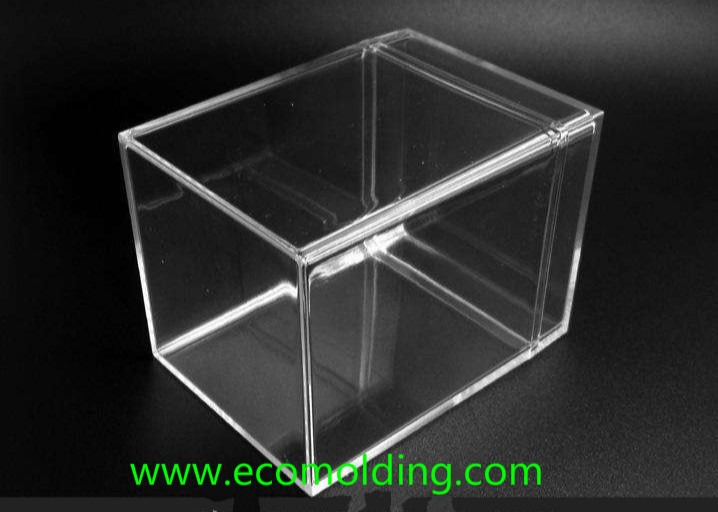
The defects in the injection molding of acrylic PMMA usually include: short shot, silver streaks, sink marks, voids, jetting, weld marks, gray / black specks, cracking, warpage, and material impurity, while the preventive measures against them are usually:
Short Shot
This is caused because the resin does not fill the cavity fully. To prevent its occurrence, we can take the following measures:
1. Adjust the supply quantity of acrylic pellets
2. Increase the injection pressure
3. Increase the injection speed
4. Raise the barrel temperature
5. Increase the screw backpressure
6. Raise the mold temperature for molding of thin-walled products
7. Extend the pressure holding time during injection
8. Extend the molding cycle
9. Increase the cross-sectional area of the gate (main runner, branch runner, and feed port) and reduce its length, to allow the resin to flow more easily.
Silver Streaks
These are the silver-white streaks on the product surface which are generated in the feed port along the flow direction of the resin. Caused by multifaceted factors, silver streaks can be prevented by taking the following measures:
1. Fully dry PMMA acrylic pellets
2. Reduce the barrel temperature and increase the injection pressure
3. Increase the injection speed
4. Reduce the screw speed and adjust the backpressure
5. Increase the mold temperature and reduce the barrel temperature for injection molding of thin-walled products
6. Determine the time duration of the molten state
7. Increase the cross-sectional area of the gate (main runner, branch runner, and feed port) and reduce its length, to allow the resin to flow more easily and reduce the barrel temperature.
Voids
These are the voids that occur where the product wall is thick. For transparent PMMA products, they will become an exterior defect that cannot be remedied later. Insufficient drying before molding or excessive barrel temperature may cause voids to occur in areas other than the center of the thick wall. If the shrinkage is concentrated in the thick wall, voids will appear in the center of the thick wall. It can be solved by the prevention of shrinkage, or by the following measures:
1. When cooled with water after ejection, increase the temperature of the cooling water or reduce the water-cooling time
2. Raise the mold temperature
Jetting
These are the ring-shaped stripes that occur on the surface of a product and are centered around the feed port. It can be prevented by taking the following measures:
1. Raise the barrel temperature
2. Raise the mold temperature
3. Increase the injection pressure and injection speed, so that it fills the cavity more quickly
4. Extend the molding cycle
5. Increase the cross-sectional area of the gate (main runner, branch runner, and feed port), and reduce its length, to allow the resin to flow more easily
Cracking / Crazing
These are the cracks that occur on the surface or the contact surface with the insert of a product. When viewed from a certain angle, it will flicker and emit light. The causes of this defect are relatively complicated, which, however, can be prevented by taking the following measures:
1. Increase the barrel temperature
2. Increase the mold temperature
3. Increase the injection speed
4. Adjust the injection pressure
Material Impurity
PMMA acrylic are widely used in all aspects of the optical field, so it is extremely necessary to prevent the mixing of impurities. Usually, there are many ways for foreign substances to be mixed in. It is time-consuming to find out the reason, but you can start with the following aspects:
1. What is the amount of dust suspended in the molding factory
2. Is the operation messy when unpacking the acrylic pellets?
3. Are there any other resins mixed in the pre-dryer, or are there any foreign substances caused by friction between the dryer and the receiver?
4. Is the hopper loader thoroughly cleaned?
5. Does the strong friction between the metal wall of the hopper loader and the acrylic pellets cause the metal wall to peel off?
6. Is there any soot or dust mixed in from the vents of the hopper loader, or whether there are foreign substances generated by the hopper loader itself?
7. Are there traces of other resins in the barrel or nozzle?
8. Is there any friction between the barrel and the screw?
9. Is there any oil or metal powder generated at the ejector pin or other friction parts of the mold?
